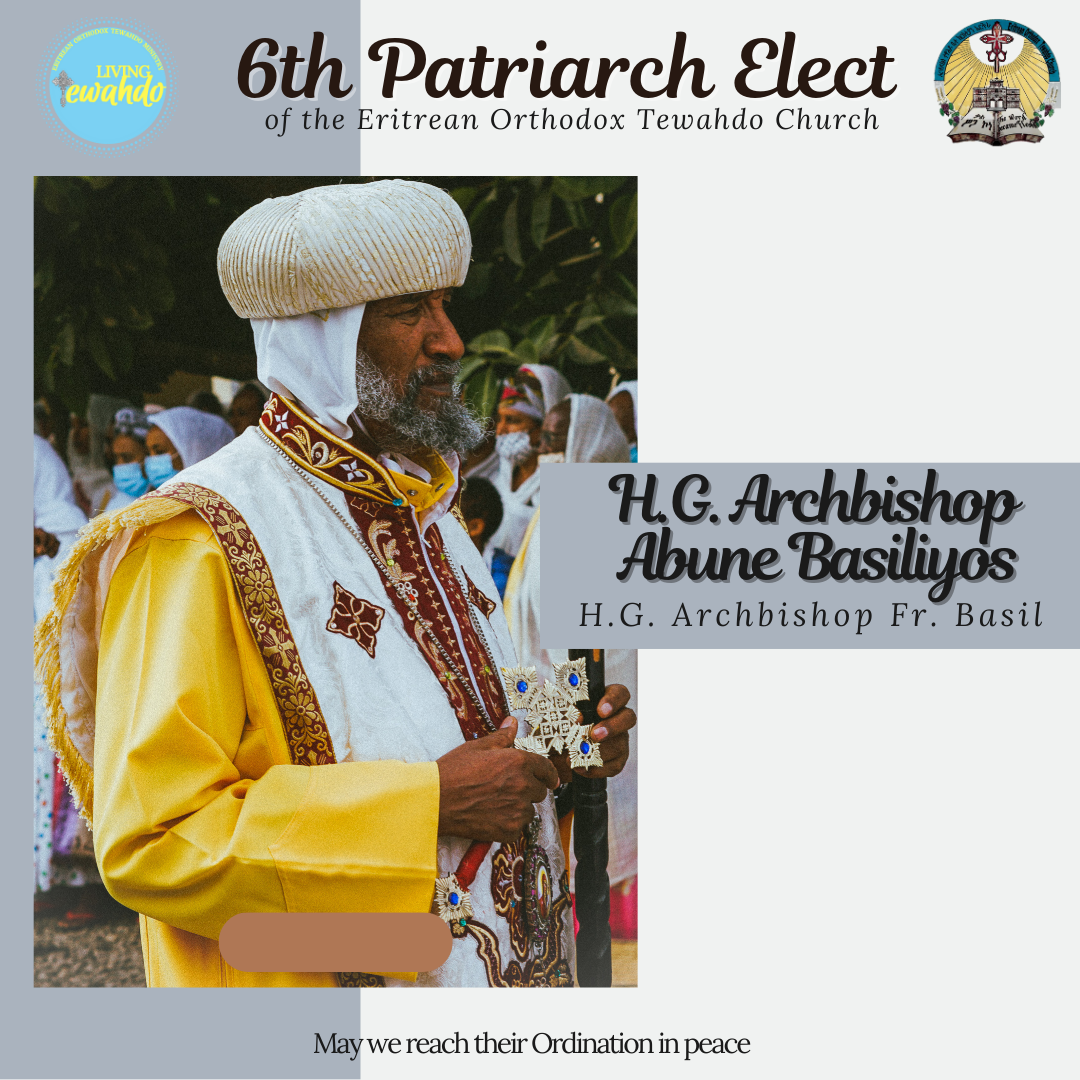Five Pillars of Mystery
The Eritrean Orthodox Church has Five Pillars of Mysteries through which it teaches and demonstrates its basic religious belief. They are called Pillars of Mystery due to the fact that they support and strengthen the faithful in religious teachings as a pillar supports a roof. These mysteries have Biblical foundation (l Cor. 14:19). Accordingly, the five pillars of mystery are expressed in the Orthodox Tewahdo Creed, which is the confession of our faith. The five mysteries of the church are as follows:
- The mystery of the Trinity
- The mystery of the Incarnation
- The mystery of Baptism
- The mystery of Communion
- The mystery of Resurrection
Mystery of Baptism
Baptism is the sacrament given to all who believe in the Mystery of the Trinity and the Mystery of Incarnation for the remission of sin, to obtain adoption from the Triune God, to inherit the kingdom of God. It is called mystery because, when the priest recites the prayer of baptism over the water and blesses it, it changes and becomes the water that flowed from the right side of our Lord Jesus Christ and one receives the invisible grace of the adopted son-hood of God (Jn. 19:34-35). Whosoever believes and is baptized shall get remission of sin. "We believe in one baptism for the remission of sin" (Tewahdo Creed). Every person is born from God through baptism, and will be free from damnation. "He that believes and is baptized shall be saved; but he that believeth not shall be damned" (Mk. 16: 16; Acts 2:28). To be born of the Trinity is for inheriting the kingdom of God. Our Lord has taught us that we cannot enter the Kingdom of God except through baptism. "Verily, verily I say unto thee, except a man is born of water and Spirit, he cannot enter into the kingdom of God." (In.3:5; Tit.3:4-7).
There were prophecies and symbols foretold by the laws and the prophets about Baptism.
- Prophecy: - "Then will I sprinkle clean water upon you, and ye shall be clean." (Ezek. 36:25; Mich 7:19)
- Symbols:
-Noah and the Ark: One of the symbols which represent baptism can be found in the Old testament with Noah and the Ark (Genesis 8:18). Our fathers teach us that Noah and his family being inside the ark counted as baptism for them while whole world was wiped clean (1 Peter 3:20). Our fathers symbolize the ark as the Church while the waters represented baptism (water used to baptism a believer).
-Circumcision:- Circumcision in the Old Testament was practiced as a sign of baptism. It was given to Abraham as a token of the Covenant. Everyone that was not circumcised on the eighth day after birth was to be cut off from his people, shared not from the promise and/or shall have no portion from the Promised Land. The uncircumcised were not considered as the nation of God.
(Gen.17:7-14). In the New Testament, circumcision was replaced by Baptism. Everyone that is not baptized was not born of God, and cannot inherit the heavenly kingdom. (Col. 2: 11). John the Baptist, at the end of the Old Testament and at the beginning of the New Testament was baptizing with water. (Mk.1:4-8). The Ark of Noah and the crossing of Israelites across the Red Sea were symbols of baptism. (lPet. 3: 19; 1 Cor. 10:2).
-The Israelians (Hebrews) crossing the Red Sea (Bahri Eritrea) is another symbol that is be found in the Old testament (Exodus 14:29) and learn that it counted as baptism in the New Testament in Corinthians 10:1-2.
What is Needed for Baptism:
- Imnet or belief- the one who is getting baptized must belief and faith that what is occuring is not a random washing but rather belief that through baptism one's sin is being erased. Mark 16:16.
- Kahin or the one who baptizes must be a priest. Matthew 28:19
- Baptizing in the name of the Holy Trinity or in the name of the Father, of the Son and the Holy Spirit.
To fulfill the prophesy and to n1ake the archetype real, our Lord and Saviors Jesus Christ was baptized in the water of the River Jordan by the hand of John the Baptist. (Mt. 3: 16; Mk. 1:9; Lk. 3:21; J n. 1: 31). The Eritrean Orthodox Church baptizes children, males on the fortieth day and females on the eightieth day. This signifies that the first persons obtained adoption from God. (Jubilee 4:2-15).
Reference:
-The orthodox Tewahod Creed
-The Holy Bibile

